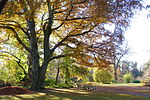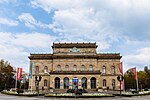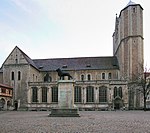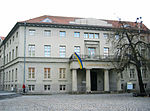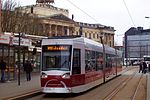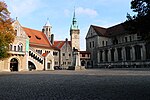State Natural History Museum
1754 establishments in the Holy Roman EmpireBuildings and structures in BraunschweigCulture in BraunschweigLower Saxony building and structure stubsMuseums in Lower Saxony ... and 2 more
Natural history museums in GermanyOrganisations based in Braunschweig

The State Natural History Museum (German: Naturhistorisches Museum Braunschweig) in Braunschweig, Germany, is a zoology museum. It was founded in 1754.
Excerpt from the Wikipedia article State Natural History Museum (License: CC BY-SA 3.0, Authors, Images).State Natural History Museum
Pockelsstraße, Brunswick Nordstadt-Schunteraue
Geographical coordinates (GPS) Address Phone number Website External links Nearby Places Show on map
Geographical coordinates (GPS)
| Latitude | Longitude |
|---|---|
| N 52.275277777778 ° | E 10.529444444444 ° |
Address
Staatliches Naturhistorisches Museum Braunschweig
Pockelsstraße 10
38106 Brunswick, Nordstadt-Schunteraue
Lower Saxony, Germany
Open on Google Maps

